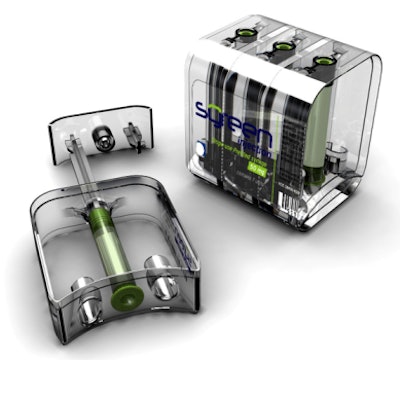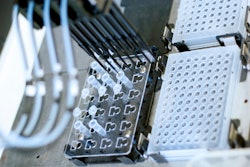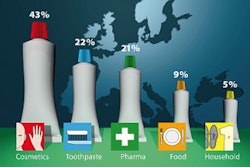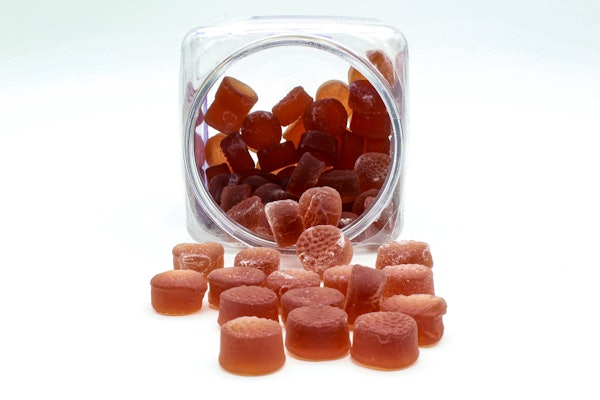
Gerresheimer presented “Addressing the needs of high demanding biopharmaceuticals using an innovative ready-to-use COP syringe system.”
The German company has teamed up with Japanese supplier, Taisei Kako, to offer the Clearject™ system featuring cyclic olefin polymer syringes.
Presenter Claudia Peterson offered these advantages--high transparency, low water vapor and oxygen permeability, and no tungsten residuals. (low extractables/inert surface.)
Gasket and syringe barrel are siliconized, and offer superior break loose/gliding forces. COP syringes provide excellent stability for sensitive drugs, and offer a three-year shelf life (shelf-life study ongoing).
Schott Forma Vitrum AG, Switzerland, presented “A tungsten-free innovative staked needle syringe system to reduce pain and improve drug stability.”
Schott's new offering is called InJentle™. It offers a tungsten-free syringe designed to prevent the drug from coming into contact with potential contaminants. A unique design, employing a “pinch-seal” closure, ensures that the drug is not in contact with the metal needle or the adhesive of the syringe during storage.
The syringe also has a tamper-evident closure and can be combined with anti-counterfeiting features such as RFID.
Additionally, thin, siliconized, sharper “virgin” needles are used to make the injection less painful for patients. Needles do not come into contact with needle shield, reducing the chance for needle hooks.
Full production is not expected to begin until second half of this year.
Finally, Safety Syringes presented “Implementation of needle-stick safety device with injectable drugs.”
Fred Field, vp of research and product development, began by citing statistics that each year there are 600,000 to one million needle-stick injuries in the U.S., and another one million in Europe, although 60% to 80% go unreported.
With more patients treating themselves in the home, needle safety provides family members with peace of mind.
Studies in the U.S. show needle-stick injuries decrease significantly (by 80% or more) with the introduction of safety devices. Cost analysis concludes the cost of treating needle-stick injuries is far greater than the cost of implementing safety devices.
Field also covered some of the factors hindering greater acceptance including cultural differences from country to country, as well as differences between healthcare professionals. Doctors may resent being told to adopt safety syringes; nurses highly value the safety, but may not be given a choice.
Field covered the types of safety systems including needle-based (mostly manually activated such as the nurse covering the staked needle after injection—which itself can cause a stick) to syringe-based safety devices that can be either actively activated (step required to employ) or passively activated (employed upon administration of the injection).
According to Field, customers have found additional benefits to adopting safety syringes, from larger plunger head for ease-of-use, to marketing customization options such as colors, logos, etc.
-Jim Chrzan, Publisher
The German company has teamed up with Japanese supplier, Taisei Kako, to offer the Clearject™ system featuring cyclic olefin polymer syringes.
Presenter Claudia Peterson offered these advantages--high transparency, low water vapor and oxygen permeability, and no tungsten residuals. (low extractables/inert surface.)
Gasket and syringe barrel are siliconized, and offer superior break loose/gliding forces. COP syringes provide excellent stability for sensitive drugs, and offer a three-year shelf life (shelf-life study ongoing).
Schott Forma Vitrum AG, Switzerland, presented “A tungsten-free innovative staked needle syringe system to reduce pain and improve drug stability.”
Schott's new offering is called InJentle™. It offers a tungsten-free syringe designed to prevent the drug from coming into contact with potential contaminants. A unique design, employing a “pinch-seal” closure, ensures that the drug is not in contact with the metal needle or the adhesive of the syringe during storage.
The syringe also has a tamper-evident closure and can be combined with anti-counterfeiting features such as RFID.
Additionally, thin, siliconized, sharper “virgin” needles are used to make the injection less painful for patients. Needles do not come into contact with needle shield, reducing the chance for needle hooks.
Full production is not expected to begin until second half of this year.
Finally, Safety Syringes presented “Implementation of needle-stick safety device with injectable drugs.”
Fred Field, vp of research and product development, began by citing statistics that each year there are 600,000 to one million needle-stick injuries in the U.S., and another one million in Europe, although 60% to 80% go unreported.
With more patients treating themselves in the home, needle safety provides family members with peace of mind.
Studies in the U.S. show needle-stick injuries decrease significantly (by 80% or more) with the introduction of safety devices. Cost analysis concludes the cost of treating needle-stick injuries is far greater than the cost of implementing safety devices.
Field also covered some of the factors hindering greater acceptance including cultural differences from country to country, as well as differences between healthcare professionals. Doctors may resent being told to adopt safety syringes; nurses highly value the safety, but may not be given a choice.
Field covered the types of safety systems including needle-based (mostly manually activated such as the nurse covering the staked needle after injection—which itself can cause a stick) to syringe-based safety devices that can be either actively activated (step required to employ) or passively activated (employed upon administration of the injection).
According to Field, customers have found additional benefits to adopting safety syringes, from larger plunger head for ease-of-use, to marketing customization options such as colors, logos, etc.
-Jim Chrzan, Publisher



















